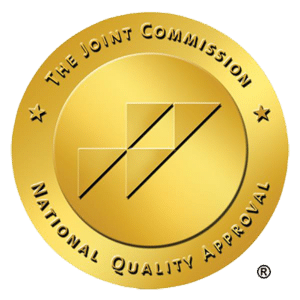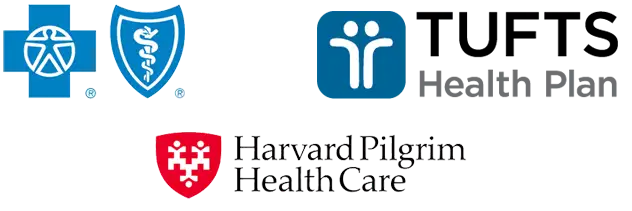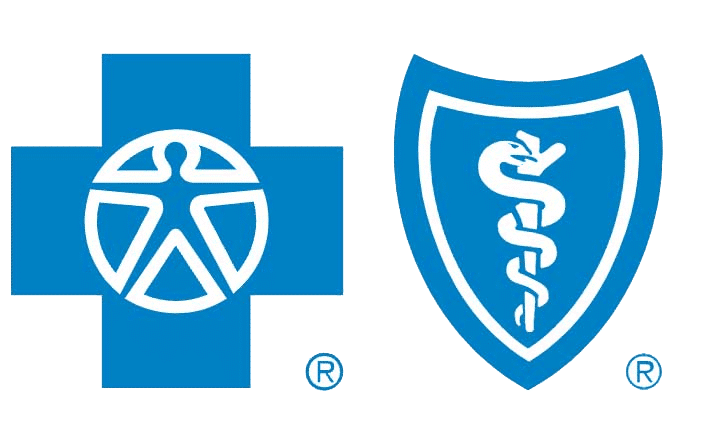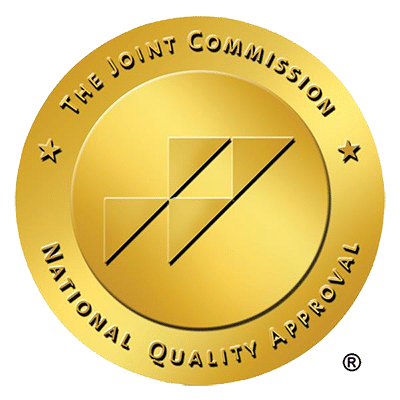Professional Crack Cocaine Addiction Treatment in Massachusetts at Topsail
Topsail is a professional outpatient addiction treatment center located in North Andover, Massachusetts. Set within a state-of-the-art facility, we offer a range of services to help patients dealing with crack withdrawal symptoms, other drug addictions, and mental health issues. Our medical professionals have the ability and expertise to give former addicts the best platform to succeed long-term with their recovery journey.
Following the completion of the initial crack detox, our outpatient addiction treatment begins. This is ideal for those that don’t require residential treatment where they stay away from home. As addiction specialists, Topsail is home to three levels of outpatient treatment. These levels are listed below.
Overview of Topsail's Crack Cocaine Treatment Programs
Full-Day treatment programs, sometimes called “partial hospitalization programs” or “PHP,” is the highest level of drug and alcohol treatment in an outpatient setting. Consisting of 5 to 6-hour sessions 5 days a week, the intensive Day program at Topsail Addiction Treatment has been created to help patients with significant addiction, and substance abuse issues. It is well suited for individuals who are either beginning their rehab journey or as a transition for people who have recently completed inpatient addiction treatment (PHP is usually the next step after detox and/or residential treatment is complete).
An intensive outpatient program, or IOP, is an immersive treatment program that helps individuals with substance abuse and addiction or alcohol problems while they live at home. IOPs are programs designed so the patient can live in their own residence or a sober living home and take part in an immersive program of continuing treatment at the facility
Weekly Outpatient addiction treatment (OP) tends to be more flexible and less restrictive than inpatient programs. Outpatient recovery programs usually require a specific number of hours and days per week spent visiting a local treatment center.
During these treatment sessions, patients will focus on drug abuse education, individual and group counseling, and learning coping strategies for living with addiction. Outpatient alcohol rehab can be an excellent standalone option or part of a long-term treatment program. Outpatient addiction treatment can last three to six months — something similar to inpatient treatment — or for longer if required.
Each program type comes with different treatment types and levels of intensity. After an initial consultation, our highly trained Topsail medical professionals help decide on the best course of treatment program for each individual. These programs are developed and customized to meet your exact needs and requirements, supplying you with a clear pathway towards successful recovery.
Symptoms of Crack Addiction
There are several distinct symptoms that are the direct result of a crack addiction. Some of these are psychological symptoms. Others are physical symptoms. To give a better idea, here are some of the most common symptoms experienced by those that have abused crack cocaine:
Intense cravings
One of the most immediate signs of crack addiction is an overwhelming desire to use the drug. These cravings are something that cannot be shook. It dominates an addict’s thoughts and behaviors. Even after the recovery process, this feeling can crop up again in certain stressful or difficult situations.
Changes in behavior
A crack addict will often display a noticeable shift in behavior. This can include increased secrecy and lying, social withdrawal, or mood swings. They may engage in risky activities, particularly when trying to obtain the drug. Crack cocaine can also see users neglect their relationships and responsibilities while they focus on getting their next fix.
Financial problems
In general, powder cocaine is more expensive to purchase. However, crack cocaine is still an expensive addiction – particularly when considering how much needs to be consumed to sustain the addiction. Consequently, individuals can face financial difficulties. This may include selling possessions or incurring debts to keep up their habit.
Physical health decline
Regular crack cocaine use can cause a wide range of health issues. Physical symptoms in terms of appearance include dental problems and notable weight loss. It can also have other damaging physical effects, including respiratory issues, heart failure and disease, liver damage, seizures, and more.
Psychological effects
Someone with a crack cocaine addiction can suffer from a range of psychological symptoms. These effects include paranoia, anxiety, irritability, and hallucinations. In more severe cases, drug abuse can cause psychotic episodes.
Tolerance and withdrawal
As when using other drugs, larger doses of crack are needed over time to continue achieving the same high. This naturally leads to an increase in tolerance. If these doses are not adequate in volume, it can result in various withdrawal symptoms. These can range from extreme fatigue to depression.
Neglect of personal hygiene
As the addiction progress, there is often a noticeable decline in personal grooming and hygiene. This is a direct result of the individual’s growing central focus on the crack cocaine over self-care.
Recognizing these symptoms is crucial for early intervention and effective treatment. Crack cocaine addiction is a serious condition. The faster professional help and support is received, the more likely a full, successful recovery will be achieved.
Crack Addiction Side Effects
Extending on from the symptoms of crack cocaine, an addict often has to deal with several serious side effects. These include the following:
- Cardiovascular issues: Crack cocaine usage can lead to various cardiovascular-related concerns. Rapid heart rate, high blood pressure, irregular heart rhythms – these are just some of the main worries. It also increases the risk of major medical emergencies like heart attacks and strokes.
- Respiratory problems: Those that smoke crack can experience respiratory issues such as coughing, lung damage, and shortness of breath. There’s also a higher risk of respiratory infections – including pneumonia and bronchitis – while severe cases can cause acute respiratory failure.
- Neurological effects: Crack use can result in seizures, headaches, and an increased risk of strokes. Plus, on the topic of neurological effects, it may even result in movement disorders and cognitive impairments. That can harm the addict’s memory, attention, and decision-making abilities.
- Psychiatric disorders: Crack cocaine can accelerate – or even trigger – various mental health issues, including anxiety, depression, paranoia, and hallucinations. Addicts may also experience intense mood swings alongside aggressive behavior.
- Dental issues: Due to the drug’s acidic properties and the typical personal hygiene neglect, the use of cocaine can lead to severe dental issues. These issues include tooth decay, gum disease, and tooth loss.
Crack Detox and Withdrawal Symptoms
Detoxification from crack cocaine is the crucial first step in overcoming addiction. A crack detox involves the body clearing itself of the drug. The process is a challenging one, admittedly, but it is essential for recovery. The challenge is magnified due to the withdrawal symptoms that come for the ride. These can vary in type, intensity, and duration depending on various factors.
Common withdrawal symptoms include the following:
- Intense cravings: One of the biggest challenges is an intense craving for crack cocaine, and this is among the most common reasons people relapse.
- Mood changes: Individuals may experience severe mood swings during withdrawal, ranging from irritability and anger to deep sadness or anxiety.
- Fatigue: As the body adjusts to functioning without the drug, a common symptom is extreme tiredness.
- Insomnia: Many individuals withdrawing from crack cocaine can struggle with sleep disturbances – even if feeling really tired – such as difficulty falling or staying asleep.
- Increased appetite: Withdrawal from crack usually leads to an increased appetite.
- Depression: Many experience depression during the detox stage, which can cause feelings that range from hopelessness to suicidal thoughts.
Navigating these symptoms can be difficult, but the medical professionals at Topsail can provide the right guidance to steer the course towards recovery.
Crack Cocaine Recovery with Topsail
As one of the leading drug treatment facilities in Massachusetts, Topsail is an ideal setting for your recovery from crack cocaine addiction. Our medical specialists can help ensure you receive the professional treatment you need. From support groups to individual therapy, we will put together a personalized treatment program that fully aids your long-term recovery process.
What Is a Crack Cocaine Addiction?
Crack cocaine is a highly addictive, potent form of cocaine. Crack is created when powdered cocaine is formed into solid crystals. This process involves the introduction of baking soda or ammonia and water, and then heated to remove the hydrochloride. This results in a smokable substance. As for the name “crack”, this comes from the crackling sound it makes when heated.
Due to its low production cost, crack cocaine is more accessible and affordable than its powdered counterpart. When factored in with the intense, immediate high it produces, this results in a dangerous combination – and explains why crack cocaine addiction is so prevalent. Addiction is rapid to develop, as smoking crack – which is the most common method of ingestion – allows the drug to reach the brain quickly. The high, while intense, is short-lived, and that typically leads users to consume crack cocaine repeatedly in a short period, further increasing the chances of an addiction developing.
Crack cocaine addiction is characterized by intense cravings for the drug, as well as loss of control over its use and continued consumption despite being aware of the harmful consequences. Regarding the latter, this addiction can result in significant physical, psychological, and social problems. This can range from severe depression to damage to the heart.
With the ramifications that come from crack cocaine abuse, it is essential treatment is sought straight away for this addiction.















